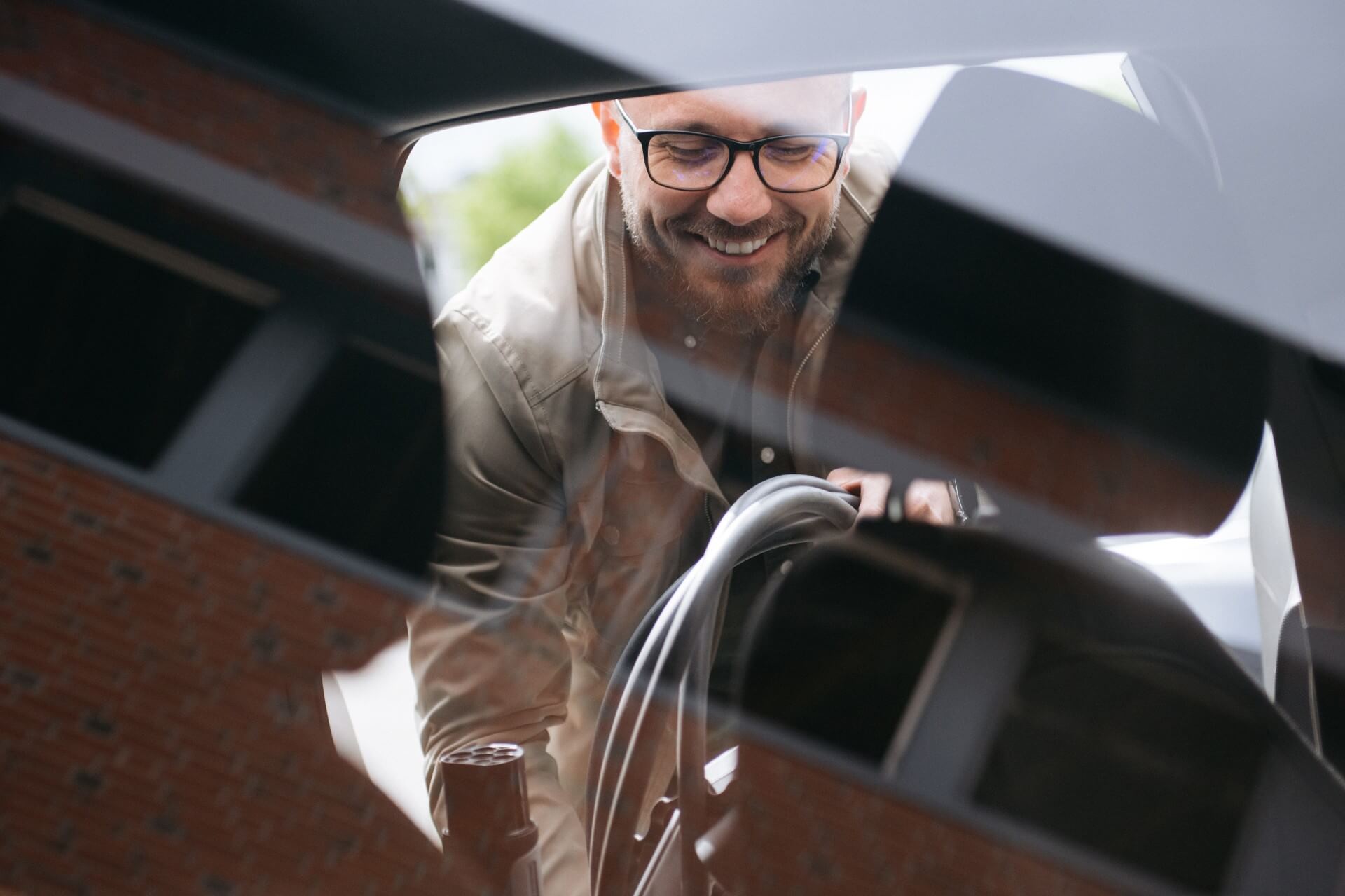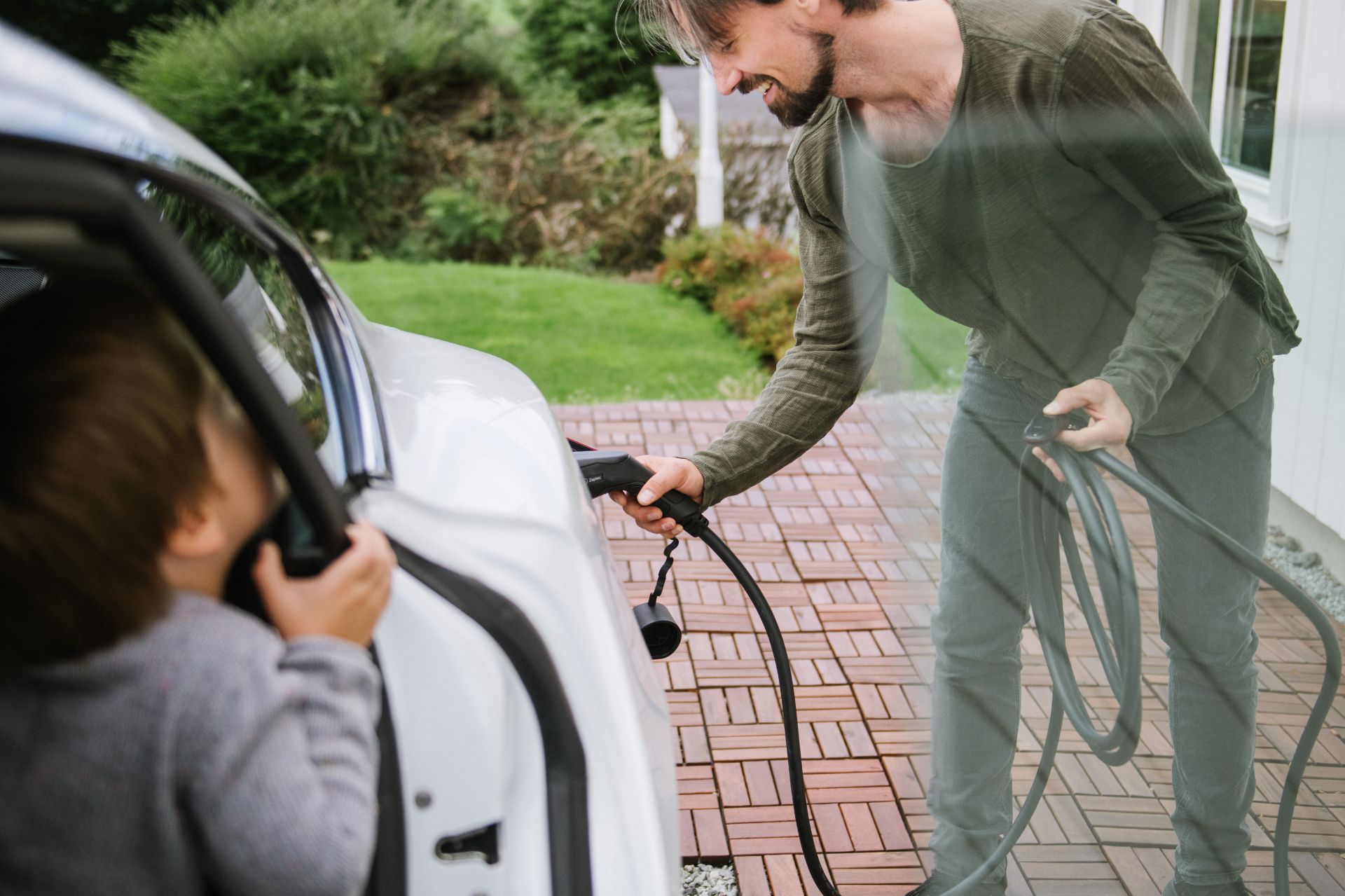Once the decision has been made to buy an electric car, a new question pops up: What kind of charger should I have at home to charge my car considering my usage pattern? Which functions do I need?
If you contact an electrician, you may hear about any special offers for a reasonably priced charger with low charging output, including ready-for use installation. Sounds easy enough, but is this the best solution? If you choose poorly, you may end up having to buy a new home charger for your next car.
What kinds of things need to be considered when choosing a home charger?
Home charging entails transferring power from the fuse box to the car via the home charger. Each of these links in the chain can form an obstacle that results in a low charging output. Everyday charging at home does not require much more than low output. What matters are driving patterns and the size of the car battery. But these are variables that can change. What happens if you switch jobs and settle into a different driving pattern? What about your next car? Until now, most electric cars have had a driving range of 200-300 kilometres and can be charged completely over night with the capacity of a regular power outlet. But the latest models on the market have a range of 400-500 kilometres and this range is increasing by the year because larger batteries are being installed in cars. A few of the electric SUVs even have batteries of up to 100 kWh. A simple, inexpensive home charger could take over 24 hours to fully charge such a battery. In other words, if you arrive home from a weekend away late Sunday evening with an almost empty battery, the battery will be only be 1/3 charged by morning.
To ensure fast charging when needed, avoid possible obstacles!
How fast can you charge?
The power cables used to connect the fuse box to the charger and the charger to the car have either one or three leads, called phases. The speed at which you can charge depends on three things:
- Whether your home, home charger and electric car all support one or three phases.
- How much power your home, home charger and electric car can provide for each phase.
- How many cars you want to charge at the same time.
To determine the number of phases and amount of power your home can provide from the fuse box to the home charger, the easiest way is to contact an electrician. Keep in mind that some electricians may provide recommendations for your specific model of electric car without considering future needs.
Adapt the electric car charging to the power you use at home.
There are charging solutions that continuously adapt the available output in the fuse box to prevent an overload. If it turns out that your home’s power grid is old and the fuse box has major limitations, keep in mind that the power grid is upgraded and modernised from time to time and the power company’s upgrade can provide more capacity in the future. If the fuse box has a limited output, it is particularly important to have a charging solution that continuously uses the available output.

By the year 2025, all new cars in Norway must be zero-emissions vehicles.
Let us examine point 3 a little closer. A growing number of cars sold are chargeable, either as fully electric or plug-in hybrids. The Norwegian government has set itself the goal that all new cars are to be zero-emissions vehicles by the year 2025. In other words, if your household currently has two cars and expects to need two cars for quite a few years to come, chances are you will soon have two cars that need to be charged – sometimes even simultaneously. Alternatively, if you have one car and children living at home who are looking forward to getting their driving license, it is not inconceivable that chargeable car number two will be parked outside before long. A properly dimensioned charging system can allocate all available output to a car or adequate output to several cars at the same time, even if the house’s power grid has limited capacity.
When choosing a home charger, it is advisable to think ahead. Choose one that you are sure will cover your needs, regardless of the future situation.


